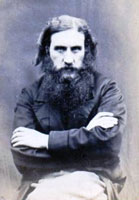Here is a lesson in creative writing. First rule: Do not use semicolons. They are transvestite hermaphrodites representing absolutely nothing. All they do is show you’ve been to college.
—Kurt Vonnegut
Let’s take this bit by bit:
Here is a lesson in creative writing.
Asserted but not proved.
First rule: Do not use semicolons.
Nobody but Vonnegut ever heard of this ‘rule’, and most notable English authors of the last few centuries have used semicolons freely. I conclude therefore that it is not a rule, but merely an expression of Vonnegut’s wishful thinking. It is true that George Orwell wrote Coming Up For Air without using semicolons, as an experiment; but he went straight back to using semicolons in all his subsequent books. I should say that counted as evidence that it is not a rule.
They are transvestite hermaphrodites representing absolutely nothing.
On the contrary, they represent the same thing as the Greek hypostigme, which was invented over 2,000 years ago. In marking up texts for public reading, as an aide-memoire to the readers, they used to put dots in between words to indicate places where one should pause. There were three of these marks originally:
The stigme teleia or ‘final dot’ served the same function as our full stop, but it was even with the tops of the letters instead of the baseline. In reading aloud, it indicated a relatively long pause.
The stigme mese or ‘middle dot’ was halfway up the line, about where we would put a hyphen, and represented a place where you could pause long enough to take a breath; it corresponded roughly to our comma.
The hypostigme or ‘under-dot’ represented a middle-sized pause, longer than a stigme mese but shorter than a stigme teleia, to show that the reader should pause while the audience took in the meaning of the preceding clause, but that the sentence was not yet over.
Note that these marks were invented long before the question mark, colon, or exclamation mark, which presumably Vonnegut thinks are important enough to keep. If the Greeks found a need for all three, and modern punctuation includes all three, I think it’s safe to say that there really is a function for all three.
All they do is show you’ve been to college.
Pish-tosh. I began using semicolons when I was about ten, and never encountered anybody in college who said anything about them one way or the other.








Recent Comments